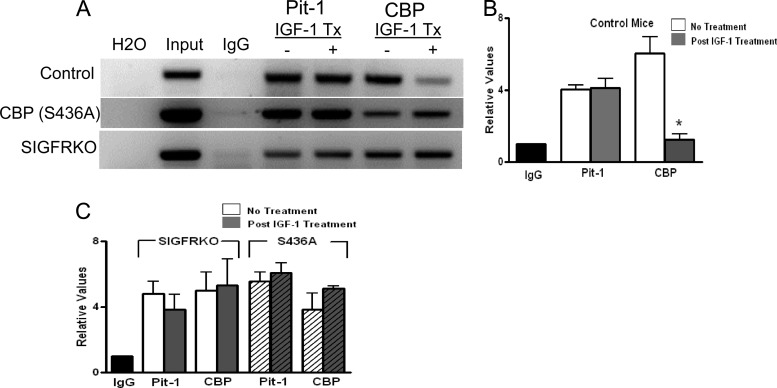Fig 11.
In vivo pituitary ChIP assay shows that IGF-1 disrupts CBP binding at the GH promoter. (A) Binding of Pit-1 and CBP at the proximal GH promoter in mouse pituitary tissue is shown on a 1% agarose gel from PCRs of DNA without or with IGF-1 treatment (IGF-1 Tx) (− or +, respectively). In addition to those of control mice, pituitaries from two other mouse models were studied: SIGFRKO, in which the somatotroph lacks the IGF-1R, and the CBP (S436A) knock-in, in which CBP cannot be phosphorylated at the S436 position. These experiments were repeated in mice treated with IGF-1. Decreased binding of CBP was found only in control animals treated with IGF-1. (B) qRT-PCR was used to measure relative amounts of binding of Pit-1 and CBP in control mice with and without IGF-1 treatment. There was a decrease in CBP binding in control mice treated with IGF-1 but not Pit-1. (C) In SIGFRKO and S436A mice, there were no changes in binding for either Pit-1 or CBP after treatment with IGF-1. *, P < 0.001. Shown are means + SEM.

